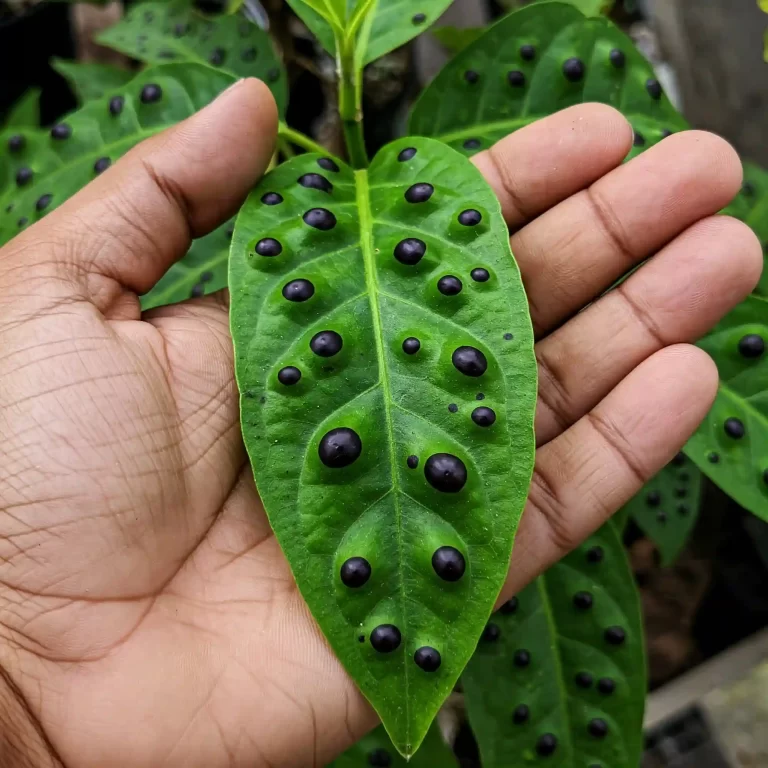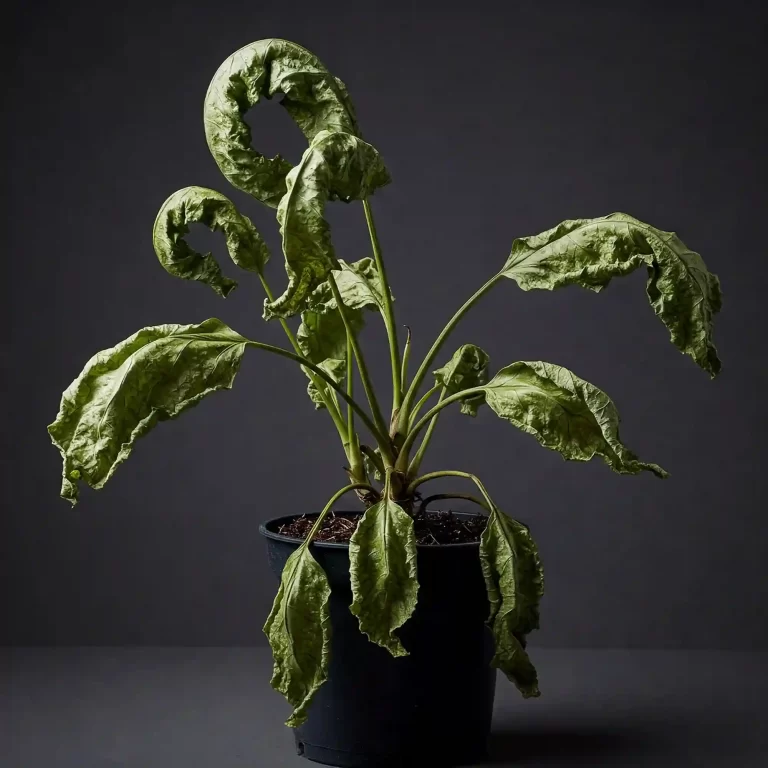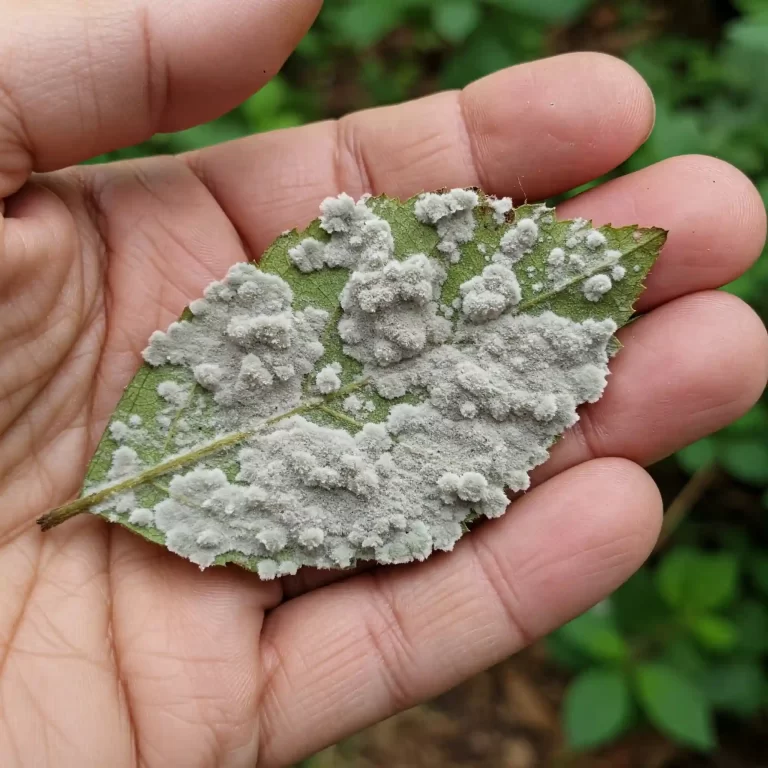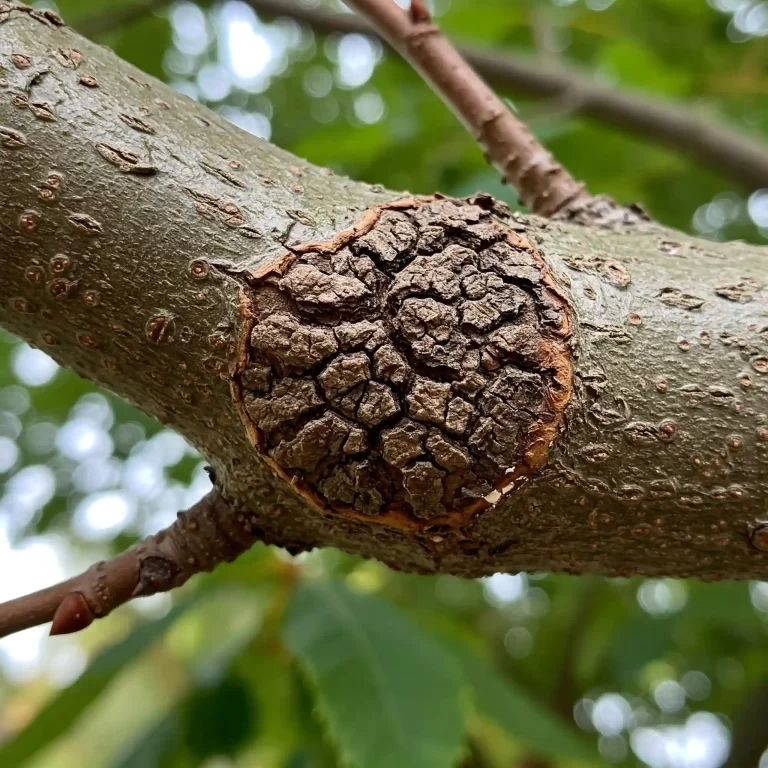| Key Takeaway | Summary |
|---|---|
| What is bubble gum plant? | Bubble gum plant is a common name for Tradescantia, a genus of plants that have colorful leaves and flowers. One of the most popular varieties is Tradescantia Blossfeldiana cerinthoides variegata “Bubblegum”, which has pink and purple hues that resemble the colors of bubble gum. |
| Why grow bubble gum plant? | Bubble gum plant is a popular and attractive houseplant, as it has low-maintenance requirements, fast-growing and trailing habit, and vibrant and eye-catching colors. It can also purify the air, add some tropical flair, and brighten up any space. |
| How to grow bubble gum plant? | Bubble gum plant can be grown from stem cuttings, either in water or in soil. The best time to propagate is in spring or summer, when the plant is actively growing. The cuttings should root in a few weeks, and then they can be transplanted to a larger pot or a hanging basket. |
| How to care for bubble gum plant? | Bubble gum plant needs bright, indirect light, regular watering, average room temperature, moderate to high humidity, monthly fertilization, occasional pruning, and prevention and treatment of pests and diseases. These factors affect the plant’s health and growth, and they need to be considered and adjusted accordingly. |
Introduction
Have you ever seen a plant that looks like it’s made of bubble gum? If you have, then you probably have encountered the bubble gum plant, a type of Tradescantia with pink and purple leaves and flowers. This plant is not only stunning and unique, but also easy to grow and care for, making it a perfect choice for beginners and experts alike.
In this article, we will provide you with a comprehensive guide on how to grow and care for the bubble gum plant. We will cover everything you need to know about the plant’s origin, characteristics, benefits, and requirements, such as watering, lighting, temperature, humidity, fertilizer, pruning, propagation, pests, and diseases. By the end of this article, you will be able to enjoy the beauty and charm of this plant in your own home.
What is Bubble Gum Plant?
Bubble gum plant is a common name for Tradescantia, a genus of plants that belong to the spiderwort family. There are more than 70 species of Tradescantia, and they are native to the Americas, especially in tropical and subtropical regions. Tradescantia plants are known for their colorful and variegated leaves, and their small and delicate flowers that come in various shades of pink, purple, blue, white, or yellow.
One of the most popular and attractive varieties of Tradescantia is Tradescantia Blossfeldiana cerinthoides variegata “Bubblegum”, which is also known as bubble gum plant, bubble gum wandering jew, or bubble gum inch plant. This plant has pink and purple hues that resemble the colors of bubble gum, and it has a fast-growing and trailing habit that makes it ideal for hanging baskets or pots. The plant can grow up to 12 inches tall and 24 inches wide, and it can produce clusters of pink flowers that contrast with the foliage.
Why Grow Bubble Gum Plant?
Bubble gum plant is a popular and attractive houseplant, as it has many benefits and advantages, such as:
- Low-maintenance: Bubble gum plant is not a fussy or demanding plant, as it does not require much attention or care. It can tolerate some neglect, and it can adapt to various conditions. It is also easy to propagate and multiply, as it can root from stem cuttings in water or soil.
- Fast-growing: Bubble gum plant is a fast-growing and vigorous plant, as it can quickly fill up a pot or a basket with its colorful and lush foliage. It can also spill over the edges and create a cascading effect, adding some drama and movement to the space.
- Vibrant and eye-catching: Bubble gum plant is a vibrant and eye-catching plant, as it has pink and purple hues that stand out and brighten up any space. It can also produce pink flowers that add some contrast and charm to the foliage. The plant can create a focal point, or complement other plants with different colors or textures.
- Air-purifying: Bubble gum plant is an air-purifying plant, as it can remove some toxins and pollutants from the air, such as formaldehyde, benzene, and xylene. It can also release oxygen and moisture, improving the air quality and humidity level in the space.
- Tropical and fun: Bubble gum plant is a tropical and fun plant, as it has a playful and whimsical appearance that resembles the colors of bubble gum. It can also add some tropical flair and exotic vibe to the space, creating a cheerful and lively atmosphere.
How to Grow Bubble Gum Plant
Bubble gum plant can be grown from stem cuttings, either in water or in soil. The best time to propagate is in spring or summer, when the plant is actively growing. The cuttings should root in a few weeks, and then they can be transplanted to a larger pot or a hanging basket. Here are the steps to grow bubble gum plant from stem cuttings:
- Choose a healthy and mature stem from the mother plant, and cut it with a sharp and clean pair of scissors. The cutting should be 4-6 inches long, and have at least two or three nodes (the bumps where the leaves grow).
- Remove the lower leaves from the cutting, leaving only the top two or three leaves. This will prevent the leaves from rotting in water or soil, and encourage the roots to grow from the nodes.
- Place the cutting in a glass of water, or in a pot of moist and well-draining potting mix. Make sure the nodes are submerged in water or soil, and the leaves are above the surface. You can use a rooting hormone to speed up the rooting process, but it is not necessary.
- Keep the cutting in a warm and bright spot, but away from direct sun. Change the water every few days, or keep the soil moist but not soggy. You can also mist the leaves occasionally to keep them hydrated and prevent wilting.
- Check the roots after two or three weeks, and transplant the cutting to a larger pot or a hanging basket when the roots are at least an inch long. You can use the same potting mix as the mother plant, or a mix of peat moss, perlite, and vermiculite. You can also add some organic matter, such as compost or worm castings, to enrich the soil and provide nutrients.
- Water the newly potted plant thoroughly, and let the excess water drain out. Place the plant in a bright and humid spot, but avoid direct sun for the first few days. You can also fertilize the plant with a diluted liquid fertilizer, to boost its growth and color.
How to Care for Bubble Gum Plant
Bubble gum plant needs bright, indirect light, regular watering, average room temperature, moderate to high humidity, monthly fertilization, occasional pruning, and prevention and treatment of pests and diseases. These factors affect the plant’s health and growth, and they need to be considered and adjusted accordingly. Here are the details on how to care for bubble gum plant:
How to Water Bubble Gum Plant
Bubble gum plant likes to be watered when the top inch of the soil feels dry. Avoid overwatering or letting the plant sit in water, as this can cause root rot and fungal diseases. You can use a well-draining potting mix and a pot with drainage holes to prevent waterlogging. Water the plant thoroughly and let the excess water drain out.
Some signs of overwatering are:
- Yellowing, wilting, or dropping of leaves
- Soft, mushy, or brown roots
- Foul smell from the soil
- Mold or fungus on the soil or the plant
Some signs of underwatering are:
- Curling, crisping, or browning of leaf edges
- Shrinking, wrinkling, or drooping of leaves
- Slow or stunted growth
- Dry, brittle, or white roots
The best type of water for bubble gum plant is rainwater, distilled water, or filtered water, as they are free of chemicals and minerals that can harm the plant. Avoid tap water, as it can contain chlorine, fluoride, or salts that can build up in the soil and damage the plant.
The best method of watering bubble gum plant is to use a watering can with a narrow spout, and water the plant from the base, near the soil. Avoid wetting the leaves too much, as this can invite fungal infections. You can also use a moisture meter, a device that measures the moisture level in the soil, to help you determine when to water the plant.
How to Provide Light for Bubble Gum Plant
Bubble gum plant prefers bright, indirect light, but can tolerate some direct sun in the morning or evening. Too much direct sun can scorch the leaves and fade the colors, while too little light can make the plant leggy and dull. You can place your bubble gum plant near a window that gets filtered light, or use a sheer curtain to protect it from harsh rays.
Some signs of too much light are:
- Bleaching
- Browning, or curling of leaves
- Dropping of flowers or buds
- Reduced or faded coloration
Some signs of too little light are:
- Stretching, thinning, or falling of stems
- Dropping or fading of leaves
- Reduced or no flowering
- Loss of variegation
The best location and direction for bubble gum plant is a south-facing or east-facing window, as they provide bright but indirect light for most of the day. Avoid north-facing windows, as they provide low light, or west-facing windows, as they provide intense and direct light in the afternoon. You can also use a light meter, a device that measures the light intensity in the space, to help you determine the best spot for your plant.
How to Adjust Temperature and Humidity for Bubble Gum Plant
Bubble gum plant can grow well in average room temperatures, ranging from 18°C to 24°C. Avoid exposing the plant to extreme temperatures, such as below 10°C or above 30°C, as this can stress the plant and cause leaf drop. You can also keep the plant away from drafts, heaters, or air conditioners that can affect the temperature and humidity levels.
Some signs of too hot or too cold temperatures are:
- Wilting, drooping, or shriveling of leaves
- Browning or blackening of leaf edges or tips
- Dropping of flowers or buds
- Slow or stunted growth
Bubble gum plant likes moderate to high humidity, as this mimics its native tropical environment. You can mist the plant regularly, use a humidifier, or place the plant on a tray of pebbles and water to increase the humidity around it. Avoid wetting the leaves too much, as this can invite fungal infections. You can also wipe the leaves gently with a damp cloth to remove dust and pests.
Some signs of too dry or too humid conditions are:
- Crisping, curling, or browning of leaf edges
- Shrinking, wrinkling, or drooping of leaves
- Spider mites, mealybugs, or aphids infestation
- Powdery mildew, leaf spot, or root rot infection
The best way to maintain a consistent and comfortable temperature and humidity level for bubble gum plant is to use a thermometer and a hygrometer, devices that measure the temperature and humidity level in the space, and adjust them accordingly. You can also group the plant with other plants that have similar needs, as this can create a microclimate and increase the humidity level.
How to Fertilize and Prune Bubble Gum Plant
Bubble gum plant is not a heavy feeder, but it can benefit from some fertilization during the growing season. You can feed the plant monthly with a balanced liquid fertilizer, diluted to half its strength, to boost its growth and color. Avoid fertilizing the plant in winter, when it is dormant, or overfertilizing, as this can burn the roots and damage the plant.
Some signs of overfertilizing or underfertilizing are:
- Yellowing, browning, or dropping of leaves
- Weak, leggy, or spindly stems
- Reduced or no flowering
- Salt buildup on the soil or the pot
The best type and amount of fertilizer for bubble gum plant is a 10-10-10 or 20-20-20 liquid fertilizer, which provides equal amounts of nitrogen, phosphorus, and potassium, the three main nutrients for plants. You can use a measuring spoon to measure the fertilizer, and follow the instructions on the label. You can also add some organic matter, such as compost or worm castings, to enrich the soil and provide micronutrients.
Bubble gum plant is a fast-growing and trailing plant that can become leggy and unruly over time. You can prune the plant to maintain its shape and size, and to encourage bushier growth. You can use sharp and clean scissors to cut back any unwanted or damaged stems, or pinch off the tips of the stems to promote branching. You can also remove any faded or dead flowers to keep the plant looking fresh and tidy.
The best technique and frequency of pruning for bubble gum plant is to prune lightly and regularly, rather than heavily and occasionally. You can prune the plant anytime, but the best time is in spring or summer, when the plant is actively growing. You can also use the pruned stems as cuttings for propagation, or share them with your friends or family.
How to Propagate Bubble Gum Plant
Bubble gum plant is easy to propagate from stem cuttings. You can take a 4-6 inch long cutting from a healthy stem, and remove the lower leaves. You can then place the cutting in a glass of water, or in a pot of moist soil, and keep it in a warm and bright spot. The cutting should root in a few weeks, and you can then transplant it to a larger pot or a hanging basket.
Some signs of successful or unsuccessful propagation are:
- White, fuzzy, or pink roots emerging from the nodes
- New leaves or buds forming on the stem
- Healthy and firm stem and leaves
- No roots or weak roots after several weeks
- Rotting, wilting, or dropping of stem or leaves
- Fungal or bacterial infection on the cutting
The best method and time of propagation for bubble gum plant is to use stem cuttings in water, as this is the easiest and fastest way to root the plant. You can also use stem cuttings in soil, but this may take longer and require more care. The best time to propagate is in spring or summer, when the plant is actively growing and has more energy and hormones for rooting.
How to Prevent and Treat Pests and Diseases for Bubble Gum Plant
Bubble gum plant is generally pest-resistant, but it can sometimes attract mealybugs, spider mites, or aphids. These pests can suck the sap from the plant and cause yellowing, wilting, or curling of the leaves. You can inspect the plant regularly for any signs of infestation, and use a cotton swab dipped in alcohol, or a spray of insecticidal soap, to get rid of them. You can also prevent pests by keeping the plant clean and healthy, and avoiding overwatering or overcrowding.
Some signs of pest infestation are:
- White, cottony, or waxy masses on the stems or leaves
- Tiny, red, or green dots on the undersides of the leaves
- Sticky, honeydew-like substance on the plant or the surface below
- Black, sooty mold growing on the honeydew
- Webbing, speckling, or mottling on the leaves
Bubble gum plant is also susceptible to fungal diseases, such as leaf spot or powdery mildew, especially if the plant is kept too wet or humid. These diseases can cause brown, black, or white spots or patches on the leaves or stems, and reduce the plant’s vigor and appearance. You can prevent fungal diseases by watering the plant properly, providing good air circulation, and removing any infected leaves or stems.
Some signs of fungal diseases are:
- Brown, black, or white spots or patches on the leaves or stems
- Powdery, fuzzy, or fluffy coating on the leaves or stems
- Yellowing, wilting, or dropping of leaves
- Reduced or no flowering
- Foul smell from the plant or the soil
Conclusion
Bubble gum plant is a wonderful and whimsical plant that can brighten up any space with its pink and purple hues. It is also easy to grow and care for, as it has low-maintenance requirements and fast-growing habit. By following the tips and tricks in this article, you can enjoy the beauty and charm of this plant in your own home.
We hope you found this article helpful and informative. If you have any questions, feedback, or suggestions, please feel free to leave a comment below. We would love to hear from you. And if you liked this article, please share it with your friends or family who might be interested in growing and caring for the bubble gum plant.
Thank you for reading, and happy gardening!




